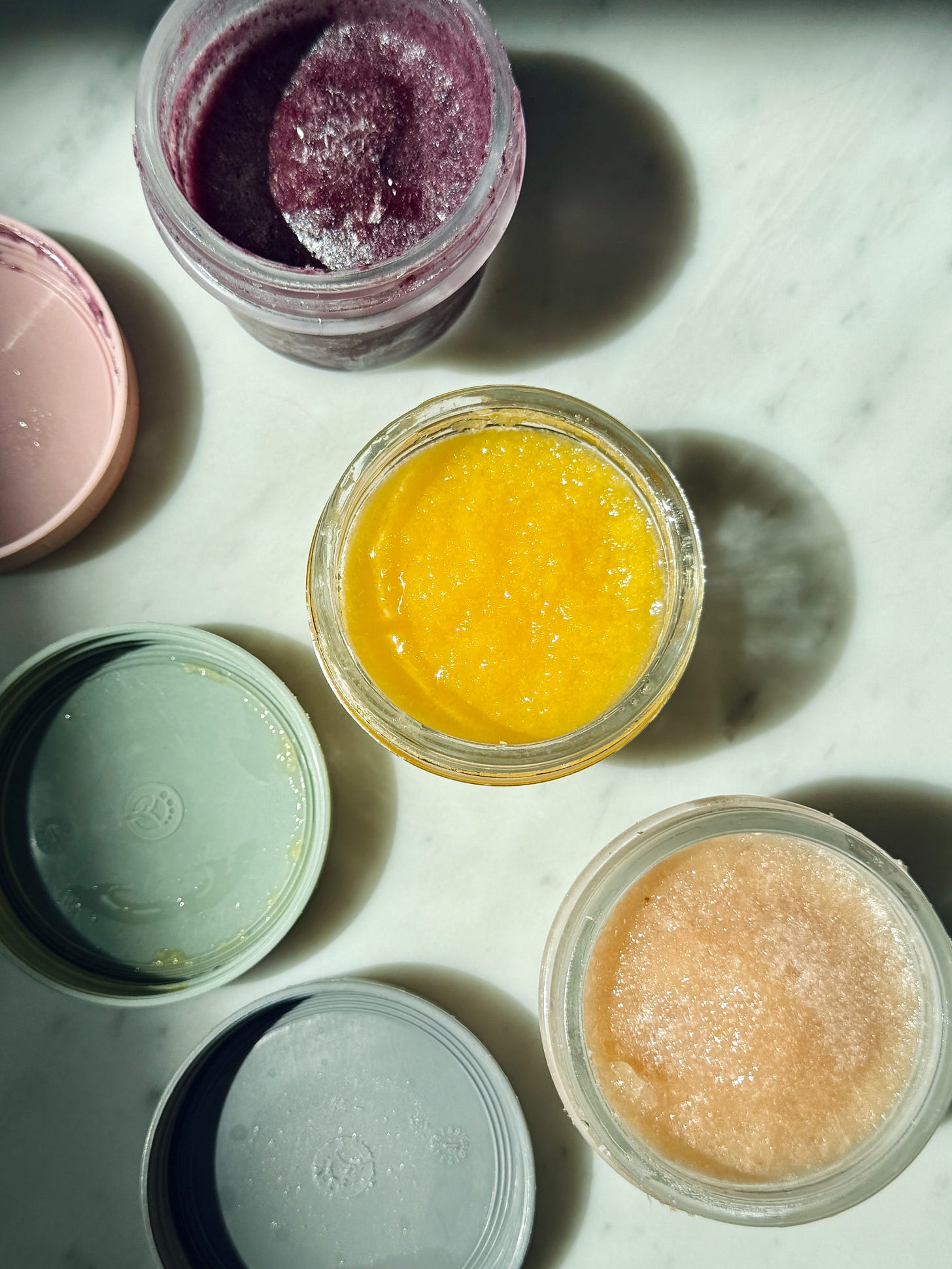Ok, let’s talk purees. If you’re just starting solids, you might be wondering how to introduce flavors in a way that helps your baby develop a love for food while keeping things simple (and let’s be honest, manageable for you).
When I started solids with Poppy, I approached it like a curriculum, with distinct levels and a natural progression from one stage to the next.
We took our time at Level 1, spending a solid 3-4 weeks on simple, single-ingredient purees before moving on. With Finn, we did things a little differently—sticking to Level 1 for just 10ish days before diving into Level 2 and I’m PUMPED for Level 3. Every baby is different, and there’s no one-size-fits-all approach, but here’s the general breakdown of how I think about puree progression:
Level 1: Simplicity at it’s Finest!
What it is: Single-ingredient purees, smooth and mild.
Why it matters: Helps babies adjust to texture and taste without overwhelming their tiny mouths and taste buds.
How long to stay here: 2-4 weeks, depending on your baby’s readiness and interest. If you’re ready to move on sooner, go for it. And remember, we added in LARGE chunks of things for texture ie: I let Finn suck on a piece of steak, chicken, cucumber etc since we are doing a combo of purees and BLW.
When I started with both kids, we focused on these single-ingredient purees:
Apple – Provides vitamin C and fiber to support gut health.
Avocado – Loaded with healthy fats, vitamin E, and folate for brain development.
Banana – High in potassium.
Butternut Squash – A great source of vitamin A, potassium, and fiber.
Carrot – Rich in beta-carotene (vitamin A) for eye health and immune support.
Cauliflower – A great source of vitamin C, choline, and fiber for brain and gut health.
Green Beans – High in iron, vitamin K, and fiber, great for bone health and digestion.
Mango – High in vitamin C for immunity and fiber for digestion.
Nectarine – High in vitamin C, fiber, and antioxidants. (and yes I sure did buy these, along with Peaches, back in September, when peaches and nectarines were at their peak—juicy, fragrant, and full of flavor—I stocked up and prepped purees so Finn could enjoy them at their absolute best, even after the season passed as I am a lunatic.)
Peach – Provides vitamin C, vitamin A, and potassium.
Raspberry – Packed with fiber, vitamin C, and manganese.
Strawberry – powerhouse of vitamin C, antioxidants, and fiber.
Sweet Potato – Packed with beta-carotene, fiber, and vitamin C, making it an excellent first food.
Zucchini – Contains vitamin C, potassium, and antioxidants.
Raw vs. Cooked: What Needs to Be Pureed vs. Mashed?
Not every first food needs to be cooked and blended into a smooth puree. Some ingredients are soft enough to just mash up with a fork and serve as is.
No cooking needed! Just mash and serve:
Avocado – buttery and soft, perfect as a quick mash.
Banana – one of the easiest first foods, just mash with a fork.
Strawberry and Raspberry – smash them lightly with a fork.
Best when cooked:
Carrot – roasting or steaming makes it soft and naturally sweet.
Sweet potato – baking or steaming brings out the creamy texture.
Butternut squash – roasting adds extra depth of flavor.
Apple – steaming makes it soft enough to blend.
Cauliflower & zucchini – a quick steam makes them blend smoothly.
Knowing when you can skip cooking saves time, which, let’s be honest, is always a win!
Once we had tasted a solid variety, we moved on to Level 2….
Keep reading with a 7-day free trial
Subscribe to Little Mouths, Big Palates to keep reading this post and get 7 days of free access to the full post archives.






